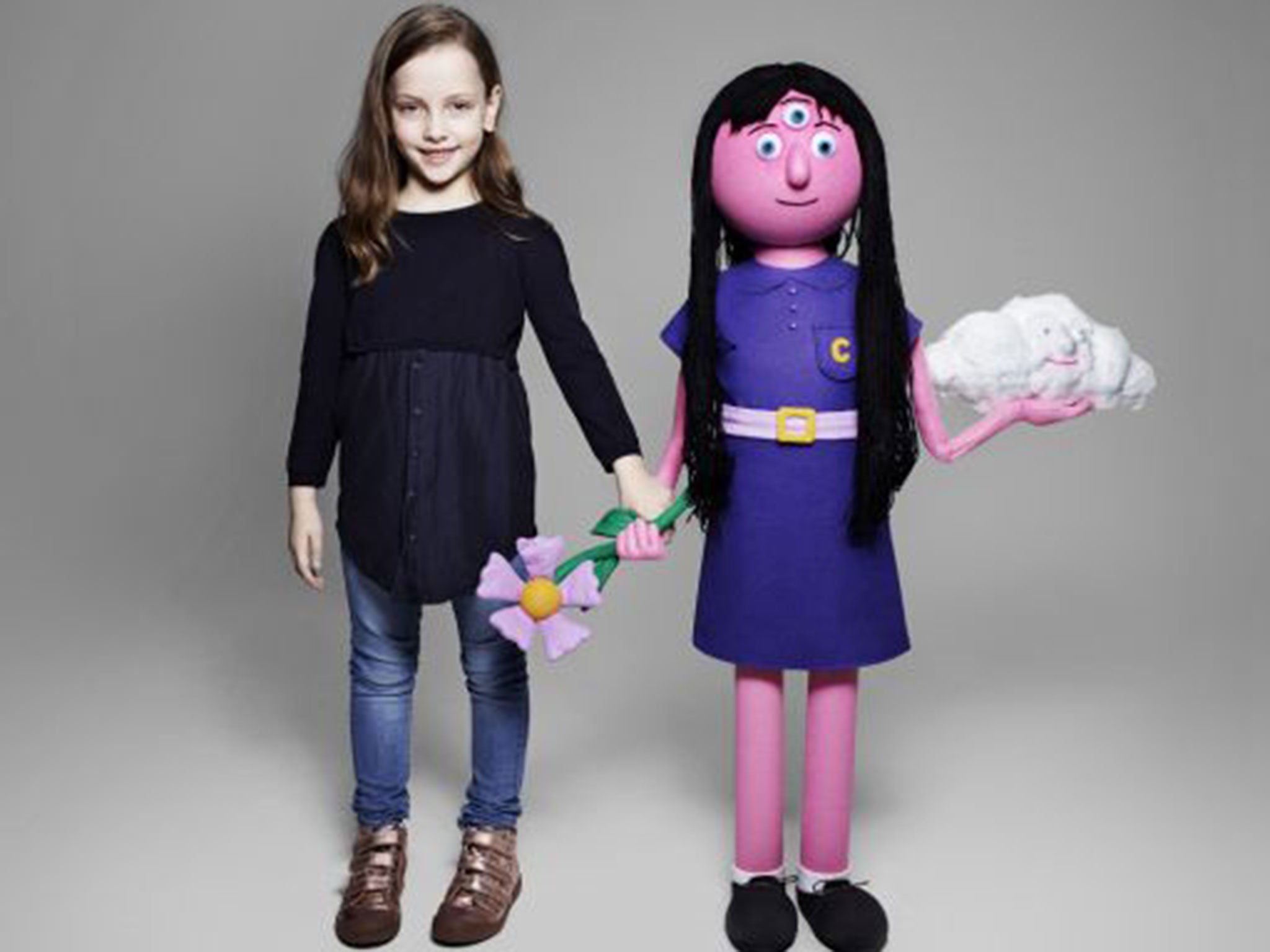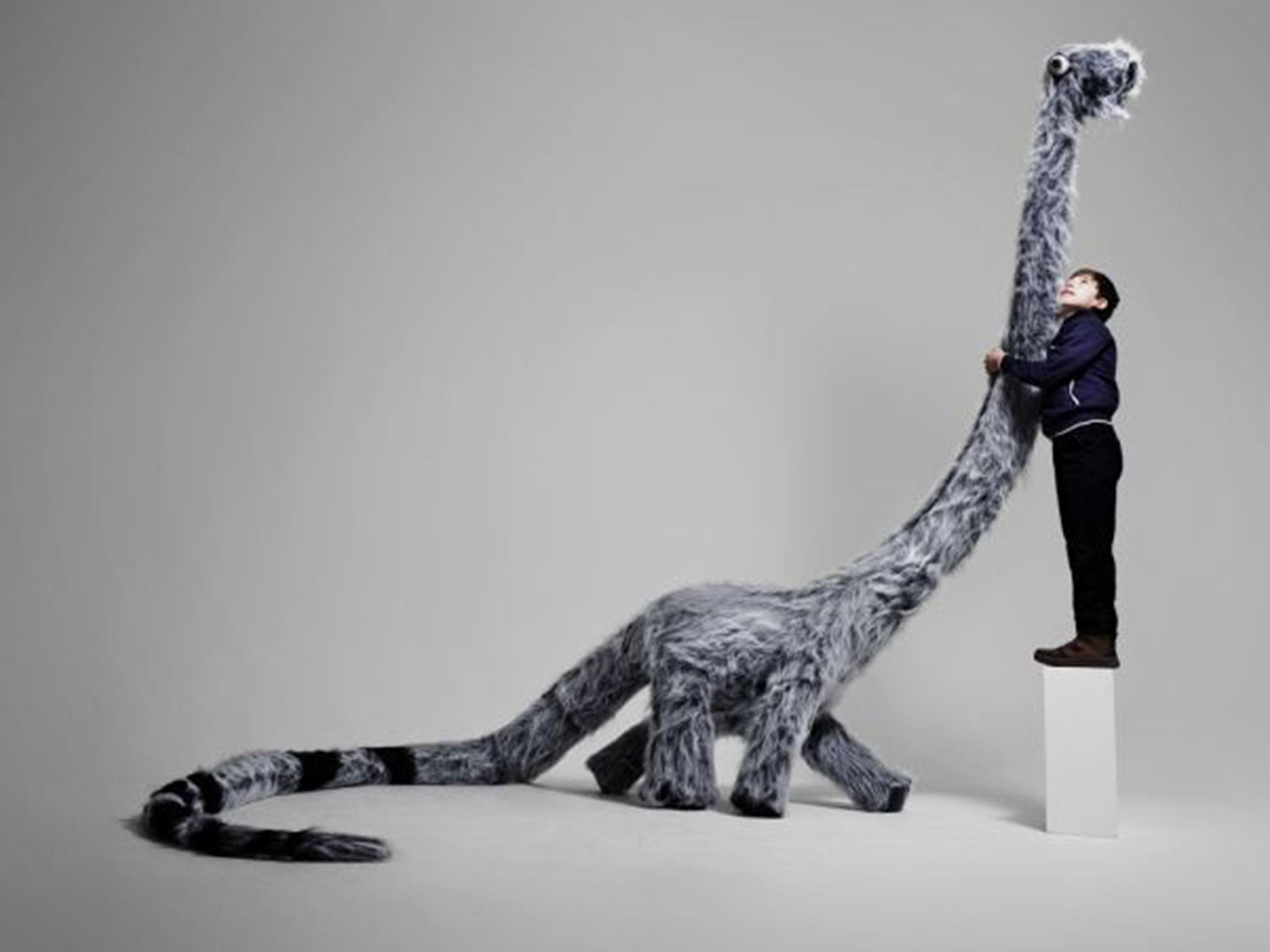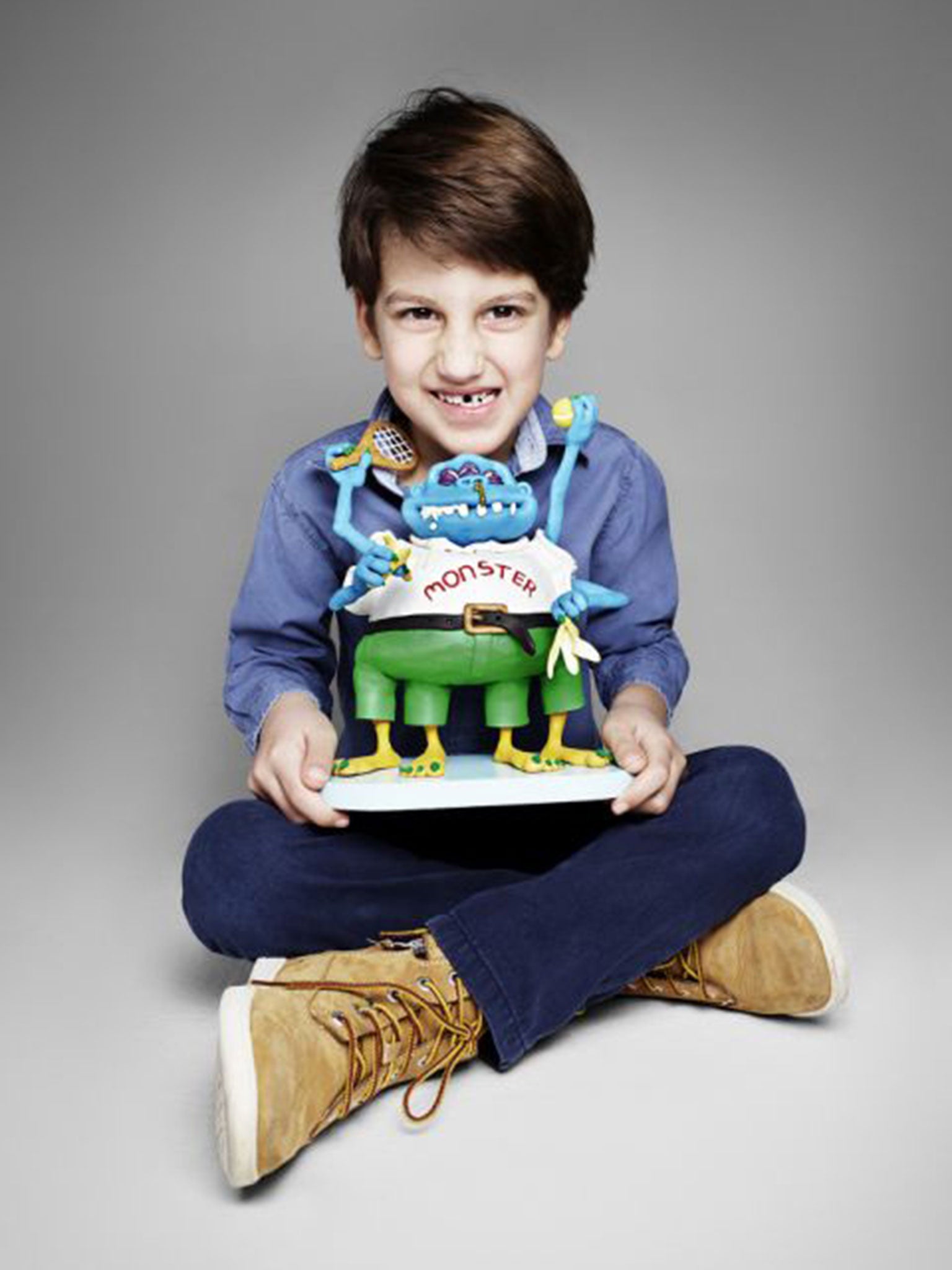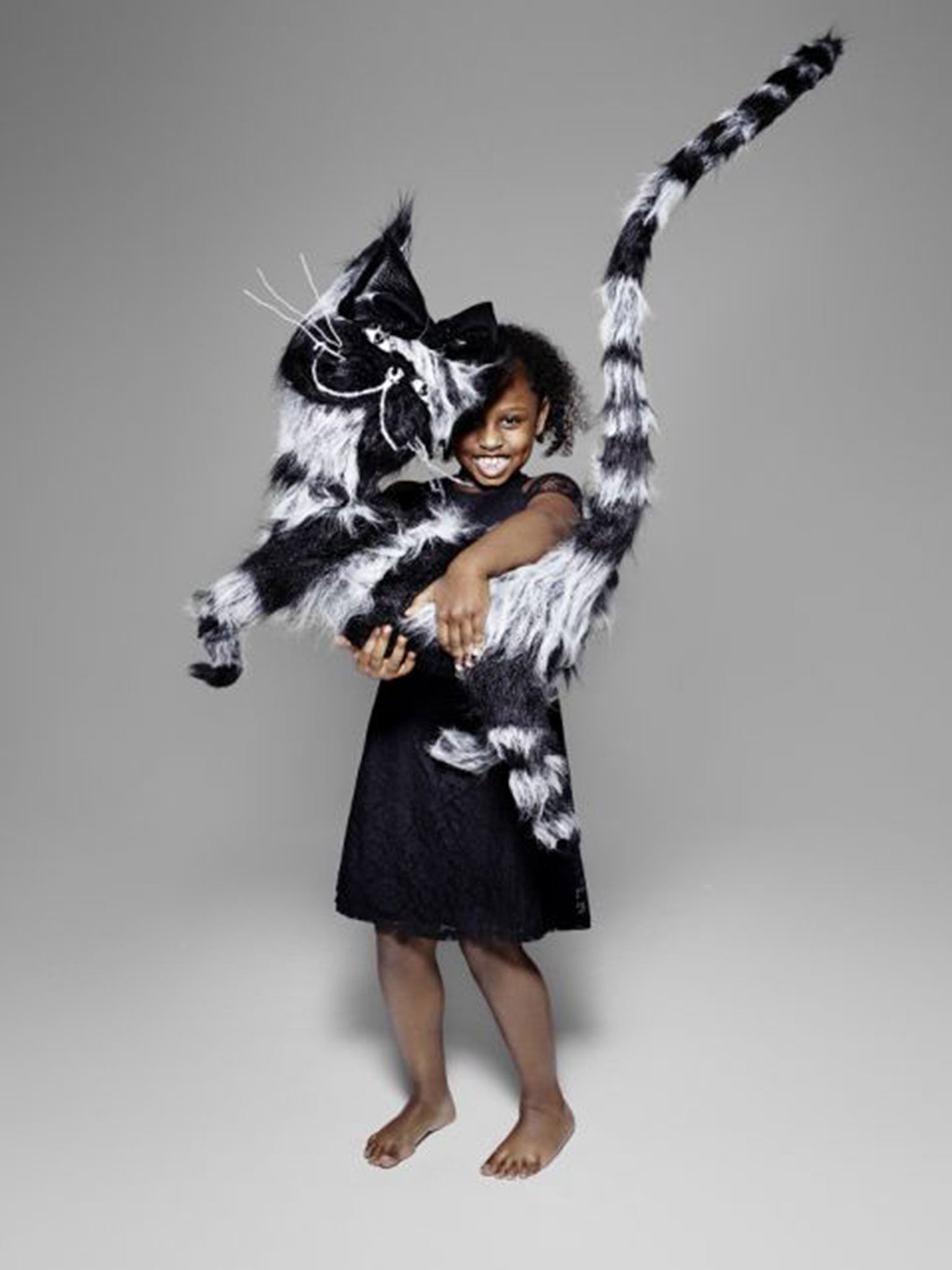The Imaginary Friend Collection: Rankin has photographed children with 'real' versions of invented companions
The children's imaginary friends have been transformed into physical characters by leading creative artists including the Japanese artist Tsuneo Goda and the Bristol-based studio Aardman, makers of Wallace & Gromit, reports Ian Burrell (friend of 'Nobody')

Your support helps us to tell the story
From reproductive rights to climate change to Big Tech, The Independent is on the ground when the story is developing. Whether it's investigating the financials of Elon Musk's pro-Trump PAC or producing our latest documentary, 'The A Word', which shines a light on the American women fighting for reproductive rights, we know how important it is to parse out the facts from the messaging.
At such a critical moment in US history, we need reporters on the ground. Your donation allows us to keep sending journalists to speak to both sides of the story.
The Independent is trusted by Americans across the entire political spectrum. And unlike many other quality news outlets, we choose not to lock Americans out of our reporting and analysis with paywalls. We believe quality journalism should be available to everyone, paid for by those who can afford it.
Your support makes all the difference.The world has not yet become so overcrowded that children have lost the inclination to squeeze up and make room for an imaginary friend. The invisible companion is reliable in a way that other, more tangible friends often aren't. Mine was called "Mr Nobody" and could be instantly summoned for a notional drubbing at any competitive activity of my choosing. Other imaginary friends, no doubt, offer a sympathetic imaginary ear.
Some can extend into adulthood, and imaginary friends are prominent in popular culture, from Frank the scary rabbit in the cult film Donnie Darko to Bunbury, the make-believe invalid pal-in-the-country to whom Algernon Moncrieff escapes in Oscar Wilde's The Importance of Being Earnest.
Now the role of imaginary friends is to be celebrated as the theme for an exhibition at the V&A Museum of Childhood in Bethnal Green, east London. For the project, the products of the imagination of real-life children have been transformed into physical characters by leading creative artists including the Japanese artist Tsuneo Goda and the Bristol-based studio Aardman, makers of Wallace & Gromit.

The results are fantastical enough to make Hollywood's finest animators think about early retirement. Each of the creations – from a purple-maned lion to an 8ft-high dinosaur – has been pictured by the celebrated fashion and portrait photographer Rankin.
"I have no doubt that the imaginary friends we have as kids have far-reaching influences on us, not only in developing our thirst for story-telling but in helping us to deal with all that life has to throw at us," he says. "I just wish someone had thought of this when I was a kid."
Aardman was responsible for bringing to life five-year-old Leo Georgiou's friend Monster, a three-eyed creature with four blue arms, four yellow legs, a taste for bananas, a penchant for tennis and an urgent need for a dentist.
The project began in September, when 60 children were brought to a workshop and invited to reveal details of their hidden companions, which were to feature in the museum's Imaginary Friends Collection.

Another of the completed figures is seven-year-old Mable Brim's friend Chloe, a girl in a purple dress with a cloud in one hand and a flower posy in the other. Like Monster, she has three eyes. Chloe's creators, Becky Sloan and Joseph Pelling of the London-based creative studio Blinkink, which made the viral hit short film series Don't Hug Me I'm Scared, says: "Hopefully, bringing the imaginary friends to life won't give the children nightmares. We're not sure we would want to hang out with Chloe ourselves."
Rhian Harris, director of the V&A Museum of Childhood, says the artists have "brought to life for all to see" creations that existed only in children's imaginations.

The exhibition was devised by Arvid Harnqvist and Amar Marwaha, a creative team at the advertising agency AMV BBDO, who say they hope the project will give permanence to fanciful childhood companions. "Children create many amazing things," they say. "Their imaginary friends are talked about all the time and often become part of the family. But when the child gets older, these marvellous creations fade away. This project aims to immortalise them."
Goda is known as the creator of the Japanese pop icon Domo-kun, a bear-like creature that has become the mascot of the Japanese public broadcaster NHK. For the exhibition, he made eight-year-old Lily Whitby's imaginary spectacles-wearing fox friend, Jamie.
Peter Vacz, of the London-based animation studio Picasso Pictures, made nine-year-old Eva Wood's lion, Swerl. "As an artist, it's one of the most exciting things to bring an imaginary creature to life," he says. "Especially when it comes from a child's mind."
The Imaginary Friend Collection is on show at the V&A Museum of Childhood, London E2, until 12 February. vam.ac.uk
Our brilliant friends
Susie Mesure
It wasn't your conventional two-legged imaginary friend I needed as a child: I had a real one of those, called Sarah McLean. What I lacked, what we both lacked, was one with four legs – and a mane and tail. Because we lived in Singapore, where anything to do with horses was wildly expensive and, climate-wise, unsuitable, riding lessons were out. So we got creative. Stables full of horses lived in our heads, hearts and gardens, especially Sarah's, where we'd spend endless afternoons schooling them in our adapted skipping gait. Best were the jump courses we'd erect with chairs and broomsticks, ending with the water jump into her swimming pool. I can't honestly remember what anyone thought of our make-believe friends, but they served their purpose – not least because I was allowed to have riding lessons as soon as we moved to the UK.
Tim Alden
Nicky first turned up sitting at the end of my bed as I sweltered through endless days at home during a bout of scarlet fever. My two younger siblings had inexplicably vanished from our shared room, so I chattered constantly with the cheeky, fair-haired boy who had a strong resemblance to my five-year-old self. I thought the visiting vicar surprisingly impolite when at first he refused to say hello to my new friend. But I never saw either of them again after I finally returned to school.
Daisy Wyatt
Charlie was based on my best friend from nursery at the time. When I was three, I wouldn't go anywhere without him, and my mum would have to call, "come on Daisy, come on Charlie" to get me to do anything. He always wore bright green clothes, and we once played dens together with some string. Charlie disappeared when my brother was born a few months later and my family moved house.
Rachael Pells
I had imaginary animal friends – specifically, a herd of 100 South African wildebeest. I'd feed them, chat to them and tuck them into bed at night. My parents didn't worry too much about my days spent prancing round the garden leading Wilbur and Winnie across the vast African planes. I'm sure my dad briefly considered giving me up for adoption, however, the day we were driving into town and I screamed for him to stop: we were an antelope short – Indigo had been left behind! He narrowly avoided crashing, but my zoo-keeping destiny remains unfulfilled.
Join our commenting forum
Join thought-provoking conversations, follow other Independent readers and see their replies
Comments